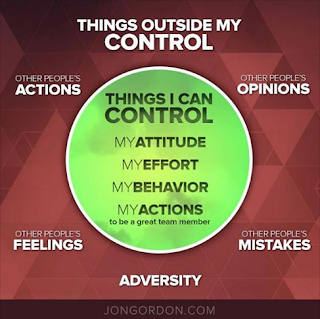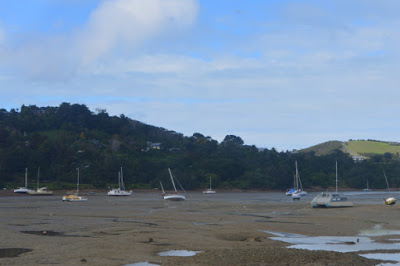We have enjoyed sharing email messages with them and reading each other's blogs to know of one another's experiences. Theirs is called "Los Sandberg in Mexico".
In reading one of their recent posts I was so touched by the story they shared from the article "Path to Palmyra" by Matthew S. Holland. This was printed in the June issue of both Ensign and Liahona and can be found HERE.
Here is background on this piece:
"From a devotional address, “The Making of the Book of Mormon, Joseph Smith, and You,” delivered at the Provo Missionary Training Center on February 15, 2014. The author lives in Utah, USA.
 This is the first article in a two-part series about the Prophet Joseph Smith. The second article, “The Coming Forth of the Book of Mormon,” will appear in next month’s issue of the Ensign."
This is the first article in a two-part series about the Prophet Joseph Smith. The second article, “The Coming Forth of the Book of Mormon,” will appear in next month’s issue of the Ensign."
Matthew Holland is president of the University of Utah Valley and is son of the apostle Elder Jeffrey R. Holland.
Here is what the Sandbergs shared about the article:
Here is what the Sandbergs shared about the article:
First he goes through all the challenges the Smith family had before the first vision: losing a store, many crop failures, Joseph's surgery on his leg, and other things that I did not know. He even talked about a volcano going off in Indonesia that caused one of the crop failures. He talks about how Lucy Mack was robbed while traveling during many of their moves.
Then he makes the point that all in all is was part of Joseph's preparation for his mission and part of getting him to Palmyra where he needed to be.
He concludes with these words of encouragement to the missionaries, and to us, that we remember that God is directing our lives.
"Remember this as perhaps the first lesson of Joseph’s life and the coming forth of the Book of Mormon. In spite of failure, mishap, and bitter opposition—and in many cases precisely because of those things—Joseph Smith got exactly where he needed to be to fulfill his mission. So, if now or on some future day, you look around and see that other perhaps less-devoted acquaintances are succeeding in their jobs when you just lost yours; if major illness puts you on your back just at the moment critical tasks of service seem to come calling; if a call to a prominent position goes to someone else; if a missionary companion seems to learn the language faster; if well-meaning efforts still somehow lead to disaster with a fellow ward member, a neighbor, or an investigator; if news from home brings word of financial setback or mortal tragedy you can do nothing about; or if, day after day, you simply feel like a bland and beaten background player in a gospel drama that really seems made for the happiness of others, just know this: many such things were the lot of Joseph Smith himself at the very moment he was being led to the stage of the single most transcendent thing to happen on this earth since the events of Golgotha and the Garden Tomb nearly 2,000 years earlier.
“But,” you may say, “my life and earthly destiny will never be like that of the Prophet Joseph.”
"That probably is true. But it is also true that your lives do matter to God, and your eternal potential and that of every soul you will meet is no less grand and significant than that of the Prophet Joseph himself. Thus, just like our beloved Joseph, you must never give up, give in, or give out when life in general, or missionary work in particular, gets utterly painful, confusing, or dull. Rather, as Paul teaches, you must see that “all things work together for good to them that love God, to them who are the called according to his purpose” (Romans 8:28).
"Just as He did with young Joseph Smith, God is shaping and directing you every single day to ends more glorious than you can know!"
These are such powerful words!
I was thinking about all the people who prepared me to receive this message. Working backward, here are just some of them:
1) The Sandbergs themselves for having shared the story on their blog
2) Brother Holland for having given the talk in the first place
3) Elder Holland and his wife for having raised a son who would be so inspired to give this talk
4) The Colleague who taught me about blogging back in 2006.
5) The missionaries who taught my parents the gospel
6) The teachers who taught me to read.
Every one of these, and probably heaps more, had a part in my reading this post today and feeling my heart lifted. Likewise, ALL the experiences we have can work together to place us into whatever circumstances have the best potential to help us develop the characteristics, knowledge and experience the Lord wants us to have. The choice is ours.
Laman & Lemuel were raised by goodly parents and saw angels, just as much as Nephi. The older brothers of that family, however, allowed pride, jealousy, stubbornness and other aspects of the "Natural Man" to harden their hearts and become seeds of contention.
I will choose every day how I will respond to the experiences I have. Some with be wonderful things and some will be truly awful things. Many will simply be boring, tedious, or mundane. But ALL my life experiences, even the really grim & painful ones, can work together for good IF - and here is the big "if", I turn to my Heavenly Father and seek the Spirit for guidance. Just because someone goes through hard times does not automatically make them stronger. Some become bitter and cranky. Others let the experience soften their hearts and teach them greater compassion. Not everyone who has tremendous blessings recognizes the source of those blessings. Some get all the more greedy. Others are filled with gratitude and humility, using their good fortune to reach out to help others. Over and over again, it is our individual agency that will determine whether the experiences we have - both good and bad- make us better people or not.
I hope I can always remember this, and to choose wisely.







































